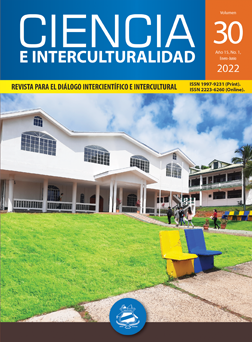Management of yellow aphid (Melanaphis sacchari) in sorghum with biological and synthetic insecticides in Masaya, Nicaragua
DOI:
https://doi.org/10.5377/rci.v30i01.14268Keywords:
aphid, entomopathogenic fungi, beneficial entomofauna, parasitism, NicaraguaAbstract
With the objective of providing alternatives to sorghum producers on the management of yellow aphid (Melanaphis sacchari, Zehnter), a trial was established from September to December 2018 at San José farm, Nindirí, Masaya, where alternatives of formulated microbial and botanical origin, including synthetics, were evaluated. The products were: M.A® 17.5 SP (Beauveria bassiana + Metarrhizium anisopliae, (Pirex®6% EC) chrysanthemum extracts + potassium soap, (Biocontrol limonene® 90 EC) lemon extracts, (TASK® 25 WG) Thiamethoxam, (TARGET® 24 SC) Sulfoxaflor, compared to the absolute control which consisted of water application. The variables evaluated were: number of M. sacchari (winged adults) per plant, yield in kg/ha per treatment evaluated, partial budget analysis, dominance analysis and marginal rate of return using the CIMMYT methodology. The results obtained show that the Thiametoxan treatment has greater control of winged adults of M. sacchari, the treatment that exerts less damage on Coccinella sp and Chrysoperla sp was B. bassiana + M. anisopliae. Thiamethoxam, Sulfoxaflor and Chrysanthemum + potassium soap have the highest commercial returns and the highest net benefits, while Thiamethoxan is the treatment with the highest marginal rate of return
Downloads
782
HTML (Español (España)) 90
EPUB (Español (España)) 90
XML (Español (España)) 146
resumen audio (Español (España)) 96
Abstract 91
Downloads
Published
How to Cite
Issue
Section
License

This work is licensed under a Creative Commons Attribution-NonCommercial-NoDerivatives 4.0 International License.
Copyright © (URACCAN)

This journal is licensed under a Creative Commons Attribution-NonCommercial-NoDerivatives 4.0 International License.
This license allows others to download the works and share them with others, as long as their authorship is acknowledged, but they can not be changed in any way nor can they be used commercially.




